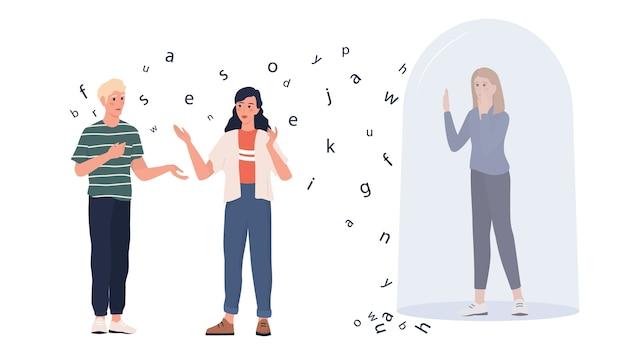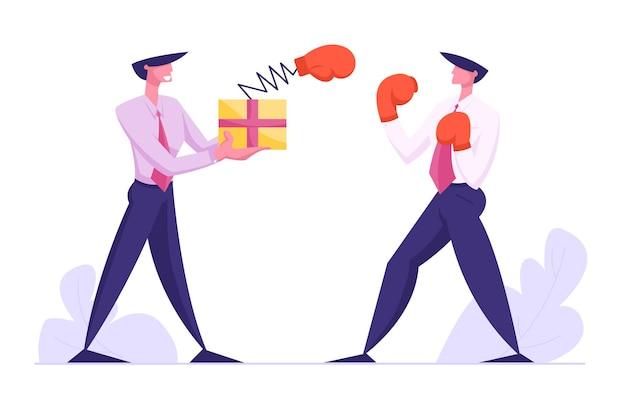As we strive towards a more equitable and inclusive world, we must acknowledge and address the issues of ageism and ableism. These forms of discrimination can affect individuals of all ages and abilities and limit their opportunities in various aspects of life, including employment, healthcare, and social interactions.
In this blog post, we will explore the definitions and examples of ageism and ableism, the impact of these prejudices on society, and ways to tackle them. Join us in learning about creating an age-diverse and inclusive environment for all individuals, regardless of their age or ability.
Ageism and Ableism: The Two Peas in a Pod
Do you sometimes feel like society isn’t intended for people who dare to be different or have differences? Do you ever feel like you’re living in a world that’s ageist and ableist all at once? Ageism is when society discriminates against someone simply for being of a certain age, whether too young or too old, while ableism refers to discrimination aimed at individuals with disabilities.
It’s no secret that ageism and ableism go hand in hand. In fact, in many ways, they’re the two peas in a pod while discriminating against one often translates to discrimination against the other. Walk into any department store, and you’ll be bombarded with messages exalting the youthful beauty, while those who are older are often forgotten or relegated to a small section in the back. Technology, which was supposed to make the world more accessible, often has features that only the able-bodied know how to use.
But you know what? We don’t have to settle for this status quo! In fact, we can begin to challenge and call out references to age and ability that make people feel bad or inferior. We can create a society that is equitable and inclusive.
Stereotypes and How they Fuel Ageism and Ableism
One of the things that we must tackle first is stereotypes. Stereotyping isn’t just hurtful; it’s often the basis for most of the ageist and ableist behavior we see in our society. For instance, people often assume that older adults are helpless or dependant, while persons with disabilities are thought of as weak and helpless. These kinds of stereotypes don’t only stigmatize individuals within those groups; they break down their motivation to maintain an independent and healthy lifestyle.
Special Treatment Versus Adaptation
Many people with disabilities can live up to the full extent of their potential with a few adjustments and adaptations made to society, technology, and the environment. However, some able-bodied people mistake the essential requirements needed for a person with a disability for wanting special treatment. A person with a disability isn’t asking for special treatment but asking for basic access to a public space that’s mostly inaccessible. Giving someone the tools to be their best selves doesn’t make them special; it merely means society is setting a level playing field.
How We Can Combat Ageism and Ableism
There is still so much work to be done to tackle ageism and ableism fully. Most significantly, it’s time to start questioning our attitudes towards age and ability. Instead of avoiding individuals who look or behave differently from us, try to embrace and celebrate their differences. Also, we can find ways to adapt and accommodate rather than to stereotype and exclude.
In conclusion, ageism and ableism may seem like insurmountable challenges; however, with the right attitude and some effort, we can combat them. We can create a society that values and honors all individuals regardless of their age and abilities. By doing so, we’ll all benefit from their unique and valuable contributions to our world.
DEI and Ageism: The Perfect Match
As we strive for a more inclusive society, it’s essential to understand the relationship between Diversity, Equity, and Inclusion (DEI) and ageism. Although ageism tends to affect older people mostly, it affects everyone, regardless of age. So, how can we incorporate DEI principles into our fight against ageism?
The D in DEI: Embracing Diversity
Diversity encompasses different racial, ethnic, cultural, and socioeconomic backgrounds, as well as different ages. When it comes to ageism, acknowledging the diversity of older people is crucial. For example, not all older adults want to retire and travel the world. Some want to start a business or continue working in their current careers. The key is to recognize and celebrate the diversity of life experiences that older people bring to the table.
The E in DEI: Ensuring Equity
Equity is about ensuring everyone has access to the same opportunities, regardless of age, race, or any other factor. When it comes to ageism, equity means treating older people fairly. For example, older workers should not be denied job opportunities because of their age. Employers should base their decisions on qualifications and experience, not age.
The I in DEI: Fostering Inclusion
Inclusion means creating an environment where everyone feels valued, respected, and included. When it comes to ageism, inclusion means listening to and incorporating the views and experiences of older people. For example, older adults should be included in discussions about healthcare policies that affect them. Their input is essential in creating policies that meet their unique needs.
DEI and Ageism: A Match Made in Heaven
Incorporating DEI principles into our fight against ageism is essential. By embracing diversity, ensuring equity, and fostering inclusion, we can create a society that values and respects people of all ages. So let’s work together to combat ageism and create a world that’s inclusive for everyone, regardless of age.
Ableist Meaning: Understanding the Prejudice
Ableism isn’t a term that everyone is familiar with, but it’s something we should all be aware of. Ableism is defined as discrimination against disabled people, and it can take many forms, from physical barriers to social exclusion. While most people would agree that ableism is wrong, it can be easy to perpetuate without realizing it.
What is Ableism
Ableism is any form of discrimination or prejudice against people with disabilities. This can manifest in a variety of ways, from overt insults to subtle microaggressions. For example, assuming that someone with a disability needs help without asking first is a form of ableism. So is assuming that someone with a disability cannot perform a certain task.
Examples of Ableism
There are many ways that ableism can be expressed, some of which are less obvious than others. Here are some examples:
Inappropriate Language
Using derogatory language about people with disabilities is harmful and offensive. Terms like “cripple” or “retard” are never acceptable.
Stereotyping
Assuming that all disabled people are the same is a dangerous attitude. Not only does it perpetuate harmful stereotypes, but it can also lead to discrimination.
Accessibility Barriers
Physical barriers like stairs, narrow doorways, and lack of ramps can prevent disabled people from being able to access certain spaces. This is a form of ableism.
Segregation
Separating disabled people from non-disabled people is another form of ableism. This can take the form of segregation in schools or housing, or exclusion from community events.
Ableism is a serious issue that affects millions of people around the world. It’s important to be aware of ableism and how we can all work together to combat it. By being conscious of our attitudes and actions, we can create a more inclusive and welcoming world for everyone, regardless of their abilities.
Examples of Ableism in Everyday Situations
Ableism is everywhere, even in situations that seem harmless. Here are some examples of ableism that you might have encountered in your everyday life:
Inaccessible bathrooms
Have you ever gone to a public bathroom only to find out that it is not accessible to people with disabilities? This is ableism. Just because you have the ability to use a standard bathroom doesn’t mean everyone can. It’s important for public spaces to have accessible restrooms for everyone.
Assuming someone is “too disabled” for a task
Sometimes people assume that someone with a disability can’t do something just because it seems too difficult. For example, assuming that someone who uses a wheelchair can’t go on a hike or that someone who is blind can’t use a computer. This is a form of ableism because it assumes that people with disabilities are not capable. Always ask someone what they need to accomplish a task, rather than assuming they can’t do it.
Speaking over someone with a disability
Just because someone has a disability doesn’t mean they can’t speak for themselves. Sometimes people feel the need to speak over someone with a disability or finish their sentences for them. This is ableism because it assumes that the person with a disability is not capable of speaking for themselves. Always listen to what someone with a disability has to say and give them the opportunity to speak for themselves.
Limits on job opportunities
People with disabilities are often limited in the job opportunities they can pursue, which is a form of ableism. Employers may assume that someone with a disability is not capable of doing certain jobs or only offer them menial tasks. It’s important to recognize that people with disabilities can do any job as long as reasonable accommodations are made.
Inaccessible technology
Technology is becoming more and more important in our daily lives, but it can also be a source of ableism. Websites, apps, and other technology tools should be accessible to everyone, but often they are not. This leaves people with disabilities excluded from the benefits of technology. It’s important for technology developers to consider accessibility when creating their products.
These are just a few examples of ableism in everyday situations. It’s important to recognize these instances of ableism and work towards creating a more inclusive world for people with disabilities.
Ageism: The Reality Check
Aging is a natural process that we all go through. Whether we like it or not, we can’t escape growing old. There is a lot of information out there that perpetuates ageism, but let’s take a reality check and see what’s really going on.
What Is Ageism
Ageism is a form of discrimination that is based on age. It’s a prejudice against people of a certain age, usually older adults. Ageism assumes that people of a certain age are incapable of doing certain things or are not worth the time and effort.
Ageism in Popular Culture
It’s not just in real life where ageism exists; it’s also in popular culture. Have you noticed how rarely you see older adults portrayed in movies and TV shows? And when they are, they’re often relegated to a supporting role or portrayed as feeble and senile. Why is it that the only time we see older adults on screen is when they’re a caricature or a punchline?
The Business of Ageism
The beauty industry is a notorious example of ageism. They sell anti-aging products because they know that people fear getting old. They capitalize on this fear by convincing people that they need their products to combat the signs of aging. But why should we fear getting old? Age is a natural process, and it’s nothing to be ashamed of.
Ageism and Technology
As technology advances, it’s easy to fall into the trap of ageism. Many people assume that older adults aren’t tech-savvy and can’t keep up with the latest gadgets and gizmos. But studies have shown that older adults are just as capable of using technology as younger generations. In fact, technology can be a valuable tool for older adults to stay connected with loved ones and stay informed.
Ageism exists, but it doesn’t have to. We need to stop perpetuating the myth that growing old is something to be feared or ashamed of. Let’s celebrate aging and all the wisdom and experience that comes with it. After all, getting older is a privilege denied to many.
Laws Against Ageism: Aging Gracefully
As we age, our bodies and our minds start to change. That’s not something we can control, and it’s certainly not something we should be discriminated against for. But unfortunately, ageism is a real problem in our society, with people of all ages facing stereotypes and discrimination based on their age.
Thankfully, some laws protect people from ageism in the workplace, healthcare, and many other areas of life. Let’s take a look at some of the most important laws that protect us from ageism.
Age Discrimination in Employment Act (ADEA)
The Age Discrimination in Employment Act (ADEA) protects people over the age of 40 from employment discrimination based on their age. This means that it’s illegal for employers to fire, demote, or otherwise treat employees differently because of their age. It’s also illegal for employers to advertise job postings that discriminate based on age.
Older Americans Act (OAA)
The Older Americans Act (OAA) provides support for aging Americans in many areas of life, including nutrition, healthcare, and community services. This act also establishes the Administration on Aging (AoA), which is responsible for developing programs and policies that support the aging population.
Americans with Disabilities Act (ADA)
The Americans with Disabilities Act (ADA) protects people with disabilities from discrimination in many areas of life, including employment, transportation, and public accommodations. This act also protects people with disabilities from ageism, ensuring that they are not discriminated against based on their age.
Social Security Act (SSA)
The Social Security Act (SSA) provides support for people who are retired, disabled, or otherwise unable to work. This act provides financial support for those who need it, helping to lift people out of poverty and ensuring that everyone has access to basic necessities.
Affordable Care Act (ACA)
The Affordable Care Act (ACA) provides access to affordable healthcare for all Americans, regardless of their age or income level. This act also prohibits insurers from charging higher premiums based on age, ensuring that older Americans have access to the same healthcare options as younger Americans.
While these laws are important for protecting us from ageism, there’s still a lot of work to be done. We must continue to fight for equality and respect for all, regardless of age or ability. After all, we’re all just trying to age gracefully.
What is Ageism and Ableism
As we grow older, it’s easy to feel like society is leaving us behind. From the moment we hit 30, the media bombards us with messages about how we should be ashamed of our wrinkles, dress “age-appropriately,” and generally fade into the background.
But why should we accept this? Ageism is a form of discrimination that pits generations against each other, forcing us to believe that once you reach a certain age, you’re no longer relevant. But the truth is, the world needs all of us – young and old – to come together in order to create positive change.
Similarly, ableism is a form of discrimination against people with disabilities. Like ageism, it’s all about treating people differently based on something they can’t control. But the reality is that those with disabilities have so much to offer the world, and it’s up to us – society as a whole – to create an inclusive environment where everyone can thrive.
So what can we do to combat ageism and ableism? It starts with recognizing that every person has value, regardless of their age or ability. Let’s celebrate the contributions of older adults and those with disabilities, and work together to create a world that’s welcoming to all.
The Harmful Effects of Ageism and Ableism
The effects of ageism and ableism go far beyond hurt feelings and missed opportunities. When we perpetuate stereotypes about older adults and people with disabilities, we limit their opportunities and reinforce harmful beliefs.
For example, ageism in the workplace can make it difficult for workers over 50 to find employment or advance in their careers. Ableism can mean that people with disabilities are denied access to education, employment, and other opportunities that would allow them to fully participate in society.
But the harm isn’t just economic. Ageism and ableism can lead to social isolation, depression, and a decreased sense of self-worth. By perpetuating these harmful beliefs, we’re undermining the well-being of entire swaths of society.
The Fight Against Ageism and Ableism
The fight against ageism and ableism starts with each of us. Whether you’re young or old, able-bodied or disabled, we all have a role to play in creating a more inclusive society.
That might mean speaking up when you hear someone make a derogatory comment about older adults or people with disabilities. It might mean advocating for policies that promote inclusion, like accessible public transportation or affordable senior housing. It might mean simply taking the time to get to know people who are different from you, and learning about their experiences and perspectives.
Whatever your role, remember that every small action can make a big difference. By working together, we can build a world that values everyone – regardless of age or ability.
Age Diversity and Inclusion
As we age, we gain more wisdom, experience, and a unique perspective on life. It’s essential for companies to embrace age diversity and create a workplace culture that values employees from all age groups. Age inclusion is an essential component in creating a positive work environment that celebrates the diversity of its employees.
The Benefits of Age Diversity
Having employees of all ages can bring a wealth of knowledge, skills, and experience to an organization. Older employees can provide mentorship and guidance to younger team members, while younger employees can bring fresh ideas and new perspectives. Age diversity also helps bridge the generation gap and enables individuals to learn from each other’s experiences and backgrounds.
Challenges Faced by Older Employees
Unfortunately, ageism is still prevalent in many workplaces. Older employees may face stereotypes and discrimination due to their age, leading to isolation, lower job satisfaction, and fewer opportunities for advancement. Creating age-inclusive policies and promoting diversity can help eliminate biases and provide equal opportunities for all employees.
Tips for Promoting Age Inclusion
Organizations can promote age inclusion by creating a culture that values and respects all employees, regardless of their age. Here are a few tips for promoting an age-inclusive workplace:
-
Create and enforce policies that prohibit age discrimination in all its forms.
-
Encourage intergenerational collaboration and foster teamwork across different age groups.
-
Provide training and support to managers and employees to help them address age-related biases.
-
Offer flexible work arrangements that enable employees to balance work and personal responsibilities.
-
Recognize and celebrate the contributions of all employees, regardless of their age.
By promoting age diversity and inclusion, companies can build a more positive work environment and tap into the diverse skills and perspectives of their workforce.
What Are the Three Kinds of Ageism
As we age, we tend to experience various forms of ageism that come our way. Here are the three kinds of ageism that you need to watch out for:
1. Personal Ageism
This type of ageism comes from those around you, including your friends, family, and acquaintances. They might make disparaging comments about your age or underestimate your capabilities based on your age. It’s essential to call out such behavior and remind them that age is just a number.
2. Institutional Ageism
Institutional ageism is rampant in society and perpetuated by structures such as healthcare systems, policies, and even advertising. It often involves discrimination against older adults, depriving them of certain rights or resources based on their age. If you face such situations, it’s essential to voice your concerns and be an advocate for yourself and other older adults.
3. Internalized Ageism
Lastly, we come to internalized ageism, which is self-discrimination against oneself. It involves self-deprecation or the belief that aging is a negative experience. Complaining about your age or harboring negative thoughts perpetuates internalized ageism, leading to a less fulfilling life experience. Instead, it’s crucial to embrace aging and focus on the positive aspects of life at any age.
Being aware of these different forms of ageism can help us fight its effects and maintain a positive outlook on aging. Remember always to stand up for yourself and others and embrace the unique experience that life offers at any age.
How Ageism Affects Older Adults
As we age, we gain wisdom, experience, and maturity. Unfortunately, we also gain something else: a target on our backs for ageism. Ageism is the discrimination against people on the basis of their age, and it affects older adults in a variety of ways.
Employment Opportunities
Ageism affects older adults’ ability to find employment, even if they have the skills and qualifications for the job. Age discrimination is illegal, but it still happens frequently. Employers may assume that older workers are less tech-savvy, less adaptable, or less productive than younger workers, even though these assumptions are often based on stereotypes, not facts.
Healthcare
Ageism can also affect the healthcare that older adults receive. Doctors may assume that older patients are less active, less mentally sharp, or less interested in sex than younger patients, leading them to miss important health issues that can affect older adults. Additionally, ageism can lead to the over-prescription of medication, as doctors may assume that older adults need more medication to manage their conditions.
Social Isolation
Finally, ageism can lead to social isolation for older adults. People may assume that older adults are less mobile, less interested in socializing, or less able to keep up with new trends and technologies. As a result, older adults may be excluded from social events, family gatherings, or community activities, leading to loneliness, depression, and disconnection.
Ageism affects us all, but it can be particularly harmful to older adults who have already contributed so much to our communities and society. By recognizing the ways in which ageism affects older adults, we can take steps to combat this insidious form of discrimination and ensure that every person, regardless of age, is valued and respected.



